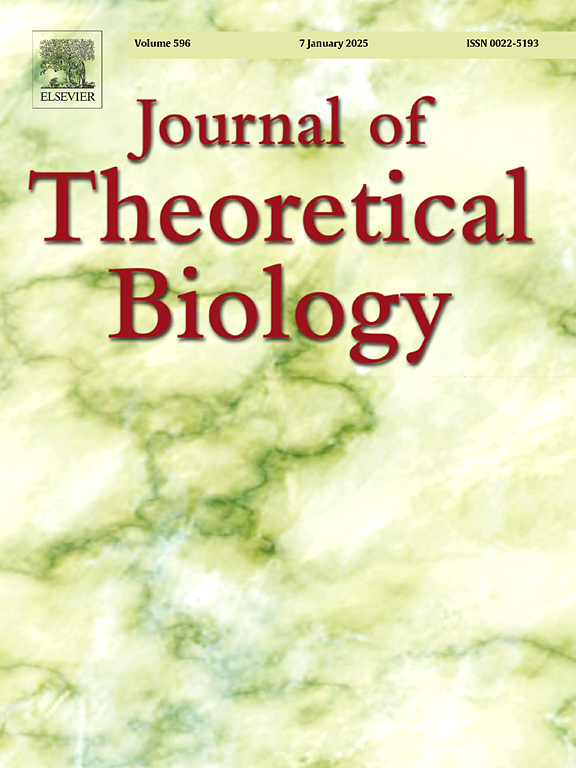种群博弈中的进化稳定策略:一个入侵者的视角
IF 1.9
4区 数学
Q2 BIOLOGY
引用次数: 0
摘要
我们从障碍函数的角度重新审视了非线性种群博弈中进化稳定策略(ESS)的各种定义。我们证明了一致不可侵犯的势垒函数与相应的下半连续势垒函数之间的等价性。此外,对于靠近另一个最佳备选答案的策略,检查这一点就足够了。我们还提供了一些反例,表明在非线性群体博弈中,一致稳定性不能被视为理所当然;我们把这样的ess表示为单数ess。此外,我们得到了等价于势垒函数为LSC的条件,并且通常更容易验证。作为一个副产品,我们发现了许多例子,其中ESS等同于统一不可侵犯:3人博弈,收益诱导凸激励,或负确定一阶导数的可微分收益,当考虑备选最佳答案时。本文章由计算机程序翻译,如有差异,请以英文原文为准。

Evolutionarily stable strategies in population games: An invader’s perspective
We revisit the various definitions of an Evolutionarily Stable Strategy () in nonlinear population games from the standpoint of barrier functions. We show the equivalence between an being uniformly uninvadable and the corresponding barrier function being lower semi-continuous (LSC). Moreover, it is sufficient to check this for strategies that are near an alternative best reply lying on an opposite face. We also provide some counterexamples that show that uniform stability cannot be taken for granted in nonlinear population games; we denote such s as singular s. Furthermore, we obtain conditions that are equivalent to the barrier function being LSC and are typically easier to verify. As a by-product, we identify a number of instances where being an is equivalent to being uniformly uninvadable: 3-player games, payoffs inducing convex incentives, or differentiable payoffs with negative definite first derivative, when considered on alternative best replies.
求助全文
通过发布文献求助,成功后即可免费获取论文全文。
去求助
来源期刊
CiteScore
4.20
自引率
5.00%
发文量
218
审稿时长
51 days
期刊介绍:
The Journal of Theoretical Biology is the leading forum for theoretical perspectives that give insight into biological processes. It covers a very wide range of topics and is of interest to biologists in many areas of research, including:
• Brain and Neuroscience
• Cancer Growth and Treatment
• Cell Biology
• Developmental Biology
• Ecology
• Evolution
• Immunology,
• Infectious and non-infectious Diseases,
• Mathematical, Computational, Biophysical and Statistical Modeling
• Microbiology, Molecular Biology, and Biochemistry
• Networks and Complex Systems
• Physiology
• Pharmacodynamics
• Animal Behavior and Game Theory
Acceptable papers are those that bear significant importance on the biology per se being presented, and not on the mathematical analysis. Papers that include some data or experimental material bearing on theory will be considered, including those that contain comparative study, statistical data analysis, mathematical proof, computer simulations, experiments, field observations, or even philosophical arguments, which are all methods to support or reject theoretical ideas. However, there should be a concerted effort to make papers intelligible to biologists in the chosen field.

 求助内容:
求助内容: 应助结果提醒方式:
应助结果提醒方式:


